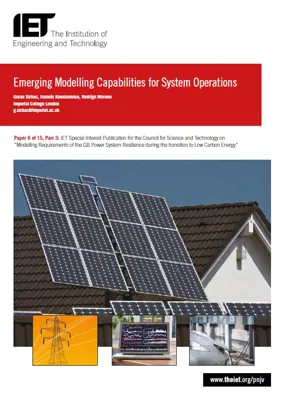Emerging Modelling Capabilities for System Operations
The current modelling tools used by transmission system operators have been designed for an era characterised by conventional generation technologies, high predictability of generation and demand patterns and a limited number of control actions to be determined and executed close to real-time.
The traditional security provision philosophy has been to adopt a preventive stance and rely on preventive measures with security of supplies being delivered through redundancy in assets rather than through real-time control actions. In a similar vein, operation of distribution networks has been based around one-way flows and a limited scope for resource optimization and control, except post-fault network restoration. Furthermore, the integration between transmission and distribution network operation has been very limited thus far.
However, the transition to a low-carbon economy is rapidly changing the reality of electricity system operation in GB. In the light of increasing penetration of renewable energy sources at the transmission and distribution level, together with expected de-carbonisation of transport and heat sector demands, the traditional operational doctrines are becoming out-dated; security through asset redundancy will have to give way to smart operational approaches and achieve a higher degree of service quality at lower costs.
At the local level this will be further challenged by the growing interest in developing smart community energy systems and smart cities, which will require a new approaches to control and in this context, high integration between local energy systems, distribution system operators and transmission system operators will need to be developed if these benefits to be realised. On the other hand, increasing the cross-border interconnection capacity will require full coordination of the EU transmission system to be developed.
The UK energy system is facing challenges of unprecedented proportions and will require radical transformation of all energy sectors, i.e. electricity, heat, gas in terms of technology and associated infrastructures, as well as in the way the energy is supplied, managed and consumed across all energy intensive activities, in order to facilitate a cost effective evolution to a low carbon future.

